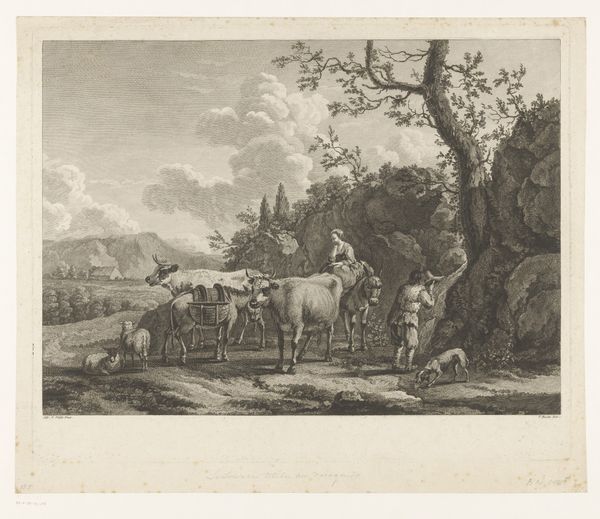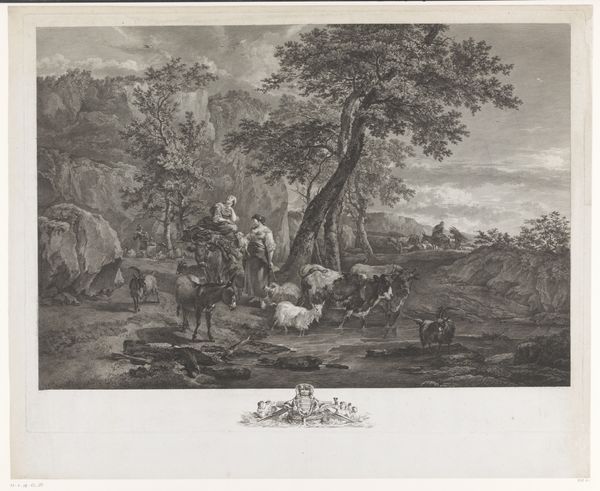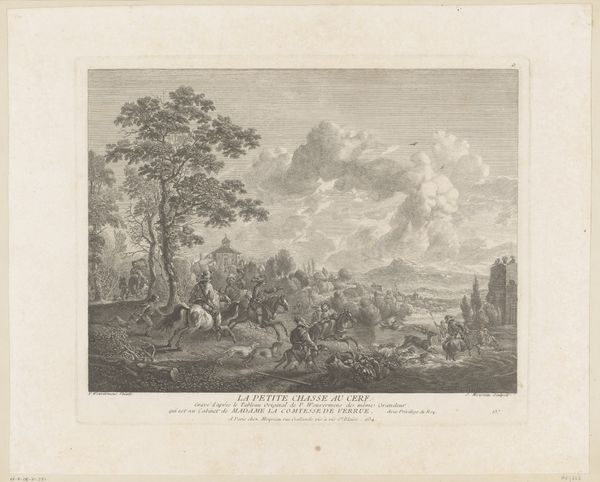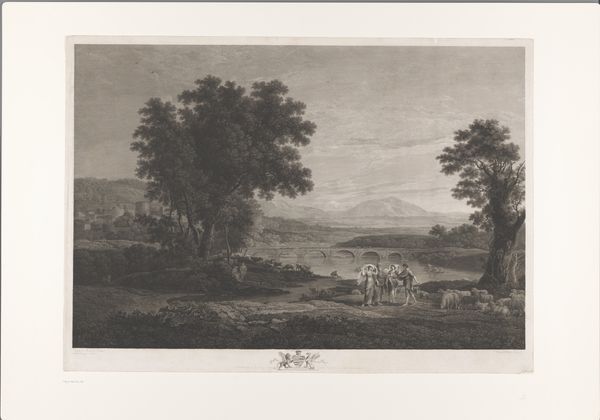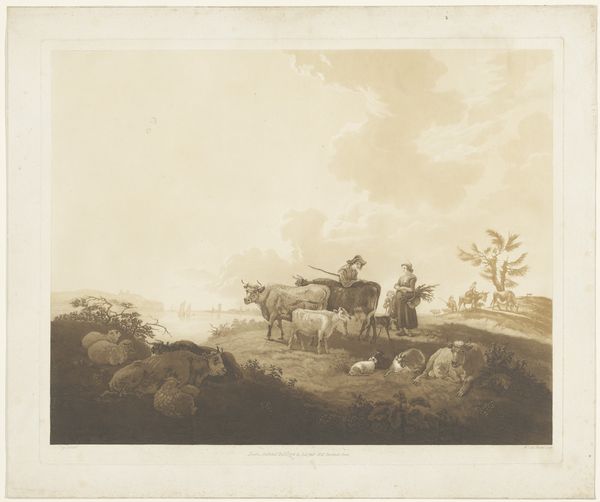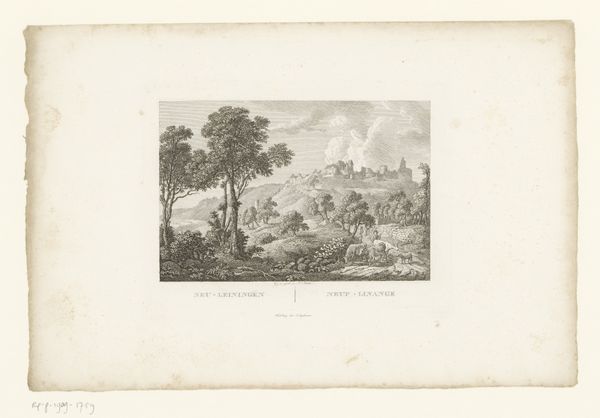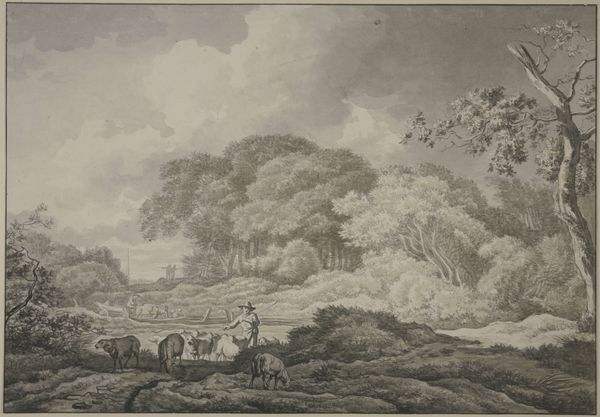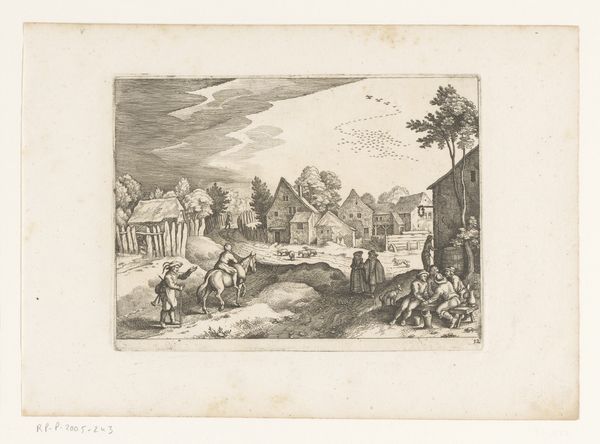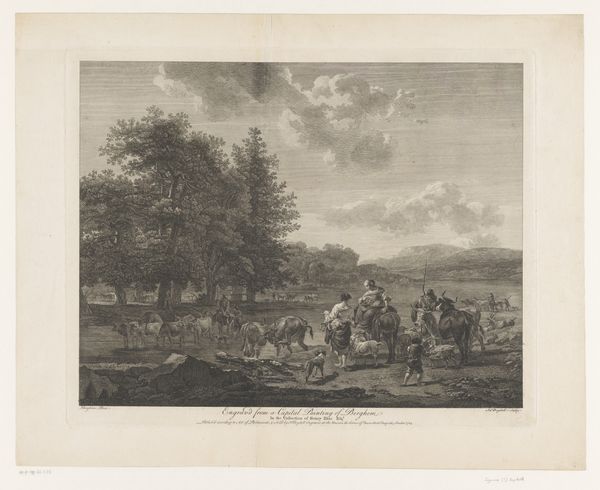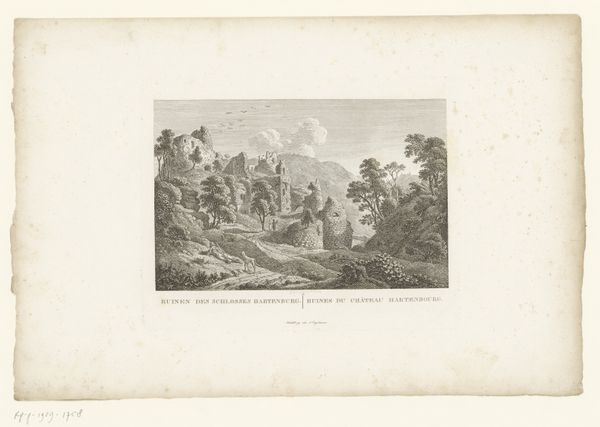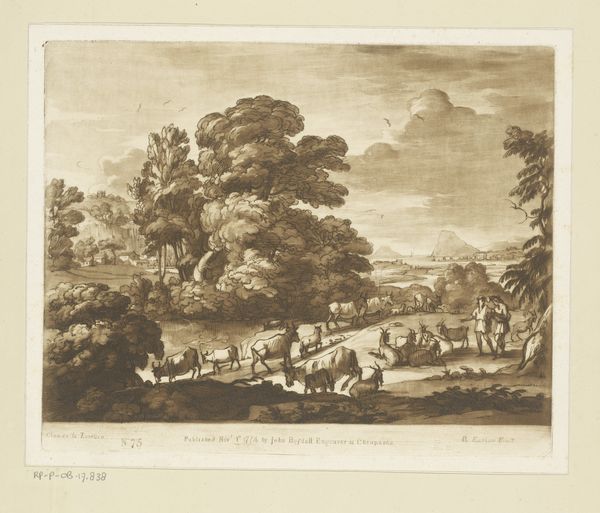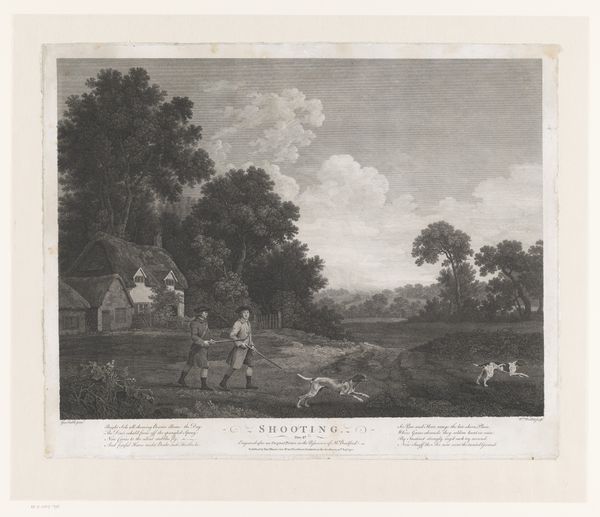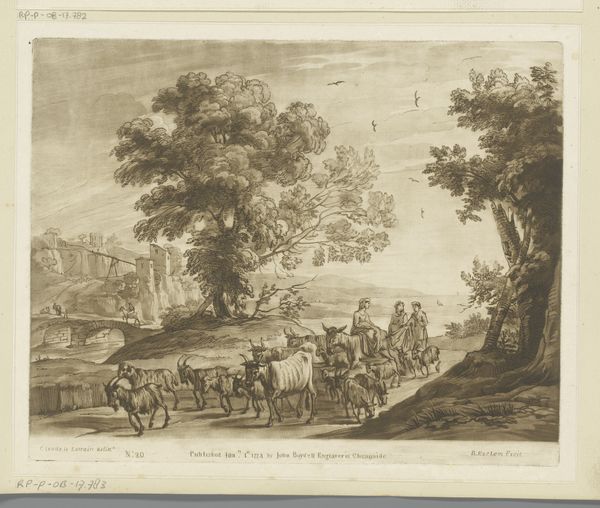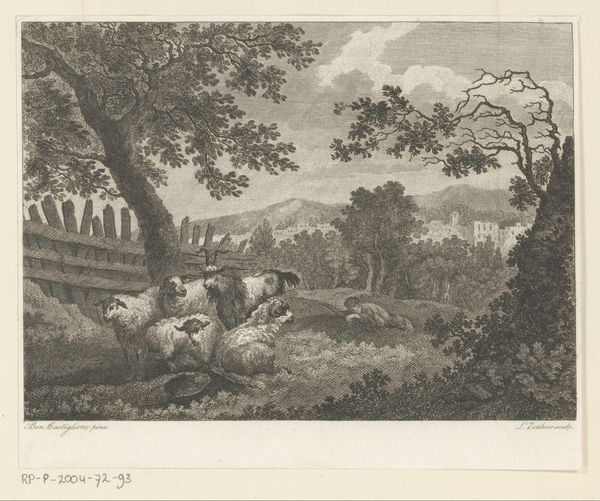
engraving
#
neoclacissism
#
landscape
#
genre-painting
#
engraving
#
realism
Dimensions: height 291 mm, width 335 mm
Copyright: Rijks Museum: Open Domain
Editor: Here we have Robert Daudet’s “Landscape with Herders en Vee,” an engraving from 1778. It feels…peaceful, pastoral. Very classic. What do you see in this piece? Curator: I see a constructed Arcadia. The image whispers of Virgil and idealized rural life. Even the cows possess a certain placid nobility, don't you think? But observe—is there any sense of genuine labor, the harsh realities of rural life? Editor: Not really, it seems very…composed, almost staged. Curator: Precisely. Note the shepherdesses; their garments, their composure. This is not raw, unvarnished truth, but a constructed image designed to evoke particular feelings. A yearning for simplicity, perhaps, or a nostalgic glance towards a half-imagined past. The imagery and arrangement speaks volumes about its era, Neoclassicism's interest in order and idealisation. What purpose might this ideal serve at the time, do you think? Editor: Maybe it was meant to offer an escape, or perhaps reinforce a social order that relied on such images? Curator: An astute observation! Images often reflect and reinforce the values of their time. The symbolism in the imagery encourages viewers to reconnect with an idealized world of beauty and ease. Consider what those persistent idyllic images can communicate to future generations? Editor: I see what you mean. I guess that this apparently simple image is really layered with ideas and ideals about nature and society. Thanks, that was really insightful. Curator: Indeed. And isn’t it fascinating how even a landscape can speak volumes about the human condition?
Comments
No comments
Be the first to comment and join the conversation on the ultimate creative platform.
